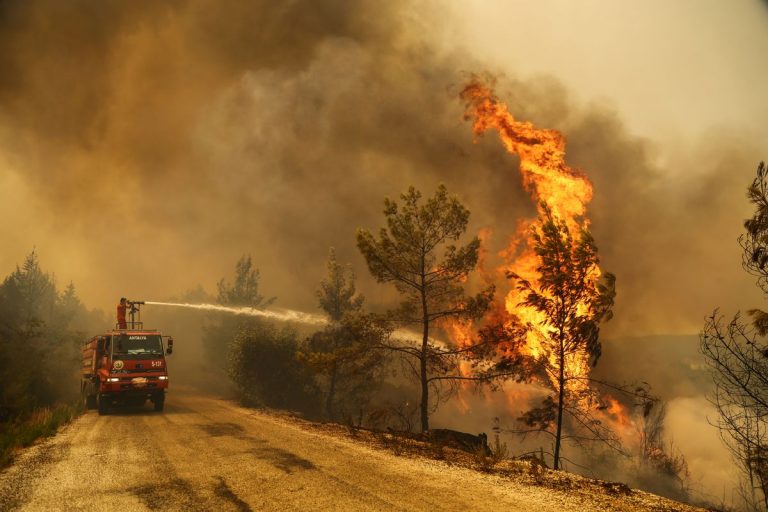California firefighters contain 75% of state’s largest wildfire

California’s largest wildfire so far this year was significantly surrounded on Monday after blackening a swath of hilly grasslands between San Francisco bay and the Central valley.
The Corral fire was 75% contained after scorching more than 22 sq miles (57 sq km) over the weekend, the California department of forestry and fire protection, or Cal Fire, said. One home was destroyed and two firefighters were injured.
The wind-driven fire erupted on Saturday afternoon on land managed by the Lawrence Livermore National Laboratory, one of the country’s key centers for nuclear weapons science and technology. The cause was under investigation.
Thousands of people in the area, including parts of the San Joaquin county city of Tracy, were ordered to leave for evacuation centers on Saturday. Evacuation orders were lifted when improved weather allowed firefighters to make progress against the flames. Interstate 580, which connects the San Francisco Bay Area to San Joaquin county in central California, was reopened after it closed in both directions from Corral Hollow Road to Interstate 5 due to the lack of visibility from the smoke.
The county’s emergency management services warned residents to stay “vigilant and prepared for potential changes” even as firefighters continued to douse the blaze.
The wildfire presented no threat to any laboratory facilities or operations, said Paul Rhein, a Lawrence Livermore spokesperson, in a statement to the Associated Press early on Sunday.
California has had back-to-back wet years that ended drought but spawned vegetation growth. Cal Fire’s outlook for 2024 noted that increasing dryness from mid-May to June would potentially lead to more small fires and a chance of larger fires depending on wind. The Corral fire is by far the largest of more than 1,200 wildfires so far this year.
The progress against the Corral fire comes just ahead of a predicted major heatwave. The National Weather Service has issued warnings for “dangerously hot conditions” throughout the Central valley from Tuesday through Thursday.
Though this fire is nearly contained, in general, fire burns hotter when the weather is hotter, said Jacob Bendix, professor emeritus in the geography and the environment department at Syracuse University.
He added that high winds can carry embers across freeways. Drought contributes to dangerous fire seasons, but paradoxically, wetter years can too.
“The flip side of that is that moisture allows for growth as well,” he said. In some places, a wet winter that causes vegetation to flourish can ultimately exacerbate future fire seasons when all those plants dry out and become fuel.
There tend to be fewer fires when the snowpack melts gradually over the course of the summer, but with higher temperatures overall due to climate change, more of that snow tends to fall as rain and the snowpack that does build up melts earlier. That, too, has been an issue in past years, he said.
